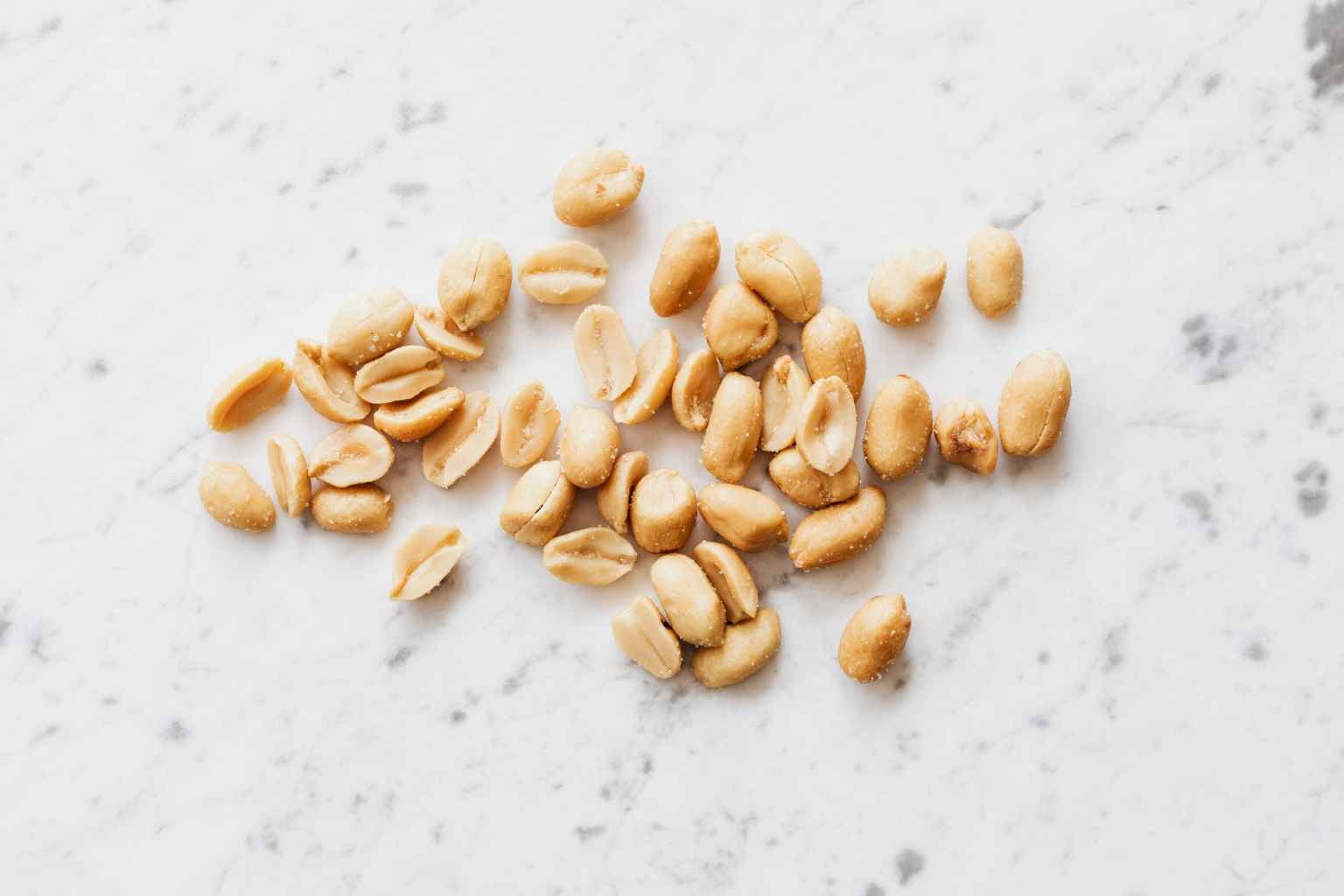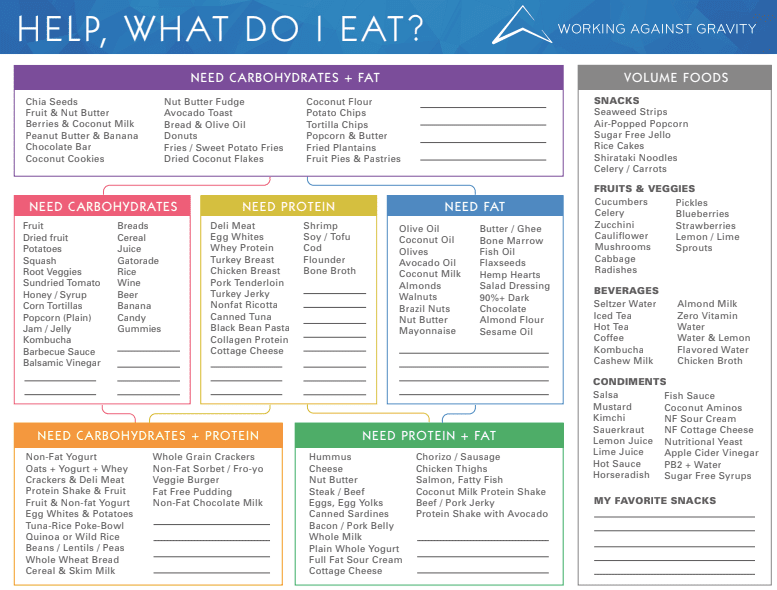Now that you have read Part 1 of Flexible Dieting: Why I love it. How to do it you should know all of the benefits of tracking your macros including how to calculate your own macronutrient targets. If you need a refresher, before we get into the logistics of tracking and what foods contain certain macros, check out Part 1 before you proceed.
When it comes to counting your macros you will need a way to track your intake using a food logging app (e.g., My Fitness Pal, Cronometer, Lose It) like the one you used to determine your baseline calorie intake. When setting up your tracking app, enter your custom calories, macros, and fiber targets into the app. If you are tracking other metrics like saturated fat, added sugar, or sodium now is the time to add them.
After you have your app targets set-up you are ready to begin tracking!
In the beginning don’t get hung up on hitting your macro targets exactly. It’s likely you won’t for the first few days or even weeks depending on your level of knowledge and ability to plan. But don’t let that deter you. With time, practice, and observing what foods contribute to your macros, it will eventually come together.

Log Accurately
To track macros successfully AND hit your goals you’ll need to know some basics about how to measure your food accurately. After all, inputting accurate data into your tracker is half the battle when it comes to tracking your macros.
To get quality macro data and therefore the results you want, consider the following:
Choose the form of food that most closely represents the food you ate and its portion size. When eating packaged foods, it’s fairly easy to search for the name of the item (e.g. Peanut Butter Lara Bar) and then input the serving size you ate (1 bar).
Foods that don’t carry labels (e.g produce or proteins from the meat counter) can require a bit more work. For example, did your meat have skin-on or off? Was your chicken thigh bone-in or boneless? Were your vegetables diced or left whole? Did you eat the food raw or cooked? There are several variables that will impact a foods macro composition, so choose the food form wisely.
A common mistake I see my clients making is choosing the food’s raw state when it should be cooked or vice versa. For purposes of accuracy, if you weighed the food before it is cooked (raw) then enter the food as raw in your log. Whereas if you weighed the food after it is cooked, then enter the food as cooked in your food log.
This is important because cooked ingredients are significantly more calorie/macro dense than raw ingredients due to the moisture loss that occurs during cooking.

Choosing the right portion or weight of the food is also essential. If you don’t have a food scale, I highly recommend purchasing one for your macro counting journey. Weighing your food will be much more accurate than trying to measure it with measuring cups. And for certain foods it’s simply impractical to use measuring cups because of the the food’s shape (i.e., whole chicken breasts, spaghetti noodles, apple slices). Measuring cups should usually only be reserved for liquid ingredients.
For composed dishes like your mom’s lasagna or curry from your local restaurant, choose a food that’s similar in the app’s food database and eyeball the portion size the best you can. It’s not going to be perfect but it’ll be better than skipping logging altogether. If you are eating out, also check to see if the restaurant has nutrition data available for its menu items and use that.
Learn About Macros!
In addition to logging your foods accurately, you will need to start learning about the macronutrient content of various types of foods.
While some foods fit squarely into the carbohydrate, protein, or fat category other foods are a mixture of macronutrients (i.e beans, dairy, nuts, salmon). As you track you will begin to learn what foods are primarily one macronutrient versus a mixture of macronutrients including which foods are high in fiber or low in fiber.
Determine Your Macronutrients per Meal
To ensure you hit close to your targets each day, I recommend dividing your total nutrient targets by the number of meals you eat per day. This makes tracking a bit more ‘digestible’ when your daily targets are condensed down to meal targets.
While, you certainly don’t have to use this method – it is beneficial to spread your food intake throughout the day to maintain a steady energy levels (carbs), fuel muscle development (protein), and ensure meals are tasty and satisfying (fat and fiber).
Using the example from my previous post on how to set your macros, let’s say you’ve determined your daily targets to be: 1600 calories, 160 grams of carbohydrates, 53 grams of fat, 80 grams of protein, and 22 grams of fiber.
Now, divide daily calories and macros/fiber by the number of meals. Let’s pretend you eat 4 times per day.
Total Daily Targets | Meal Targets (Based on 4 meals)
- 1600 calories | 400 calories per meal
- 160 g carbs | 40 g of carbs per meal
- 80 g of protein | 20 g of protein per meal
- 53 g of fat | 13 g of fat per meal
- 22 g of fiber | 5.5 g of fiber per meal
Now that you know generally what your meal targets will be, it is easier to determine what foods/portion sizes will fit within your macro targets.
Food Sources of Macronutrients
There are so many great resources online that breakdown the macronutrients of various food categories. And while I can’t capture everything in this short blog post, due to the sheer number of foods available to us – the following provides you a snap shot of some main food categories and their primary macronutrients.
Carbohydrates: Fruits, Vegetables (Starchy & Non-Starchy), Grains and Desserts/Sugar
15 grams of carbohydrate
Dairy products will contain variable amounts of protein and/or fat and certain grains and vegetables will contain moderate amounts of protein, as well.
⅔ cup of yogurt
1 oz of bread products (english muffin, hamburger bun)
½ cup cooked grains like rice, pasta, couscous, oatmeal.
⅓ cup of cooked beans
1 small tortilla (6 inch)
1 small whole fruit (apple, peach, orange)
½ banana
¾ cup berries
2 Tbsp of dried fruit
½ cup of fruit juice
3 cups of raw non-starchy vegetables
½ cup of cooked non-starchy vegetables

Proteins: Meat, Seafood, Eggs, Dairy, Legumes (Beans, Peas, Lentils)
15 grams of protein
Lean to fairly lean meat or seafood will contain an additional 1 to 10 grams of fat. Low-fat dairy products also contain some carbs and fat.
2.5 oz of chicken or turkey, skinless
2.5 oz of salmon
2.5 oz of shrimp
2 oz of white fish (cod, tilapia, tuna)
2 oz lean beef (flank steak, tenderloin, roast beef)
2 oz pork loin or ham
2 oz of low-fat cheese
2.5 oz of lean deli meat
¾ cup of cottage cheese
¾ cup of greek yogurt
6 egg whites

Fats: Oil, Salad Dressings, Nuts, Seeds, Avocados, High Fat Meats & Dairy
15 grams of fat
Certain 'fats' contain variable amounts of carbs and protein (e.g. seeds, nuts, avocado) and high-fat meats or eggs contain the addition of protein
1.5 Tbsp of butter or ghee
1.5 Tbsp of mayo
3 Tbsp of cream cheese
18 almonds
¼ cup of walnut halves
3 Tbsp of seeds
2 Tbsp of nut butter
½ avocado
3 whole eggs
5 slices of bacon

Baby Step Macro Counting and Focus on Hitting Protein First!
While figuring out what quantities and types of foods you have to eat in order to hit your target may be intimidating, don’t stress! You can baby step into your macro counting journey by first focusing on budgeting your calories, then hitting your protein goals.
Once you have mastered that, then strategize how to hit your carb, fiber, and fat goals.
Getting too much fat? Choose leaner sources of meat, switch from low-fat to non-fat dairy, or start misting your cooking oil instead of pouring it into your cooking pan.
Lacking protein? Consider adding a protein supplement mid-day, swap your morning oatmeal for an egg omelette or increase the amount of meat or fish you eat at a meal by a couple ounces.
Over on carbs? Replace some of your starchy vegetables (i.e., potatoes, peas, carrots) for non-starchy vegetables. Start paying closer attention to product labels and reduce your intake of added-sugar.
In my experience with working with clients, each person will generally have one nutrient that is more problematic to hit. But as time progresses, you will learn which macronutrients you generally are falling short-in and/or exceeding.
This guide (pictured below) from Working Against Gravity provides some great troubleshooting tips on what foods to choose if you need more or less of a certain macronutrient(s). I highly recommend printing it out and sticking it to your fridge or downloading it to your phone.

A Final Word
It can be expected that some days you will eat more of a certain macronutrient, and other days where you will eat less. Your average calorie and macronutrient intake at the end of the week is more important than your day to day variation.
While consistently hitting your calorie and nutrient targets is important to achieving your goals, your macro targets should be used as a guide to fat loss – it’s not the end all be all.
Use some common sense, and don’t completely disregard your innate hunger or satiety cues for the sake of hitting a number. After all, there is supposed to be some ‘flexibility’ with flexible dieting.
If you enjoyed todays post, comment below and let me know what you learned or even what sparked additional questions for you?!